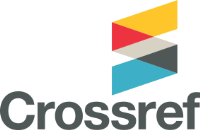Аналіз сучасних методів обстеження та оцінки функціональних порушень у фізичній терапії при лікуванні пацієнтів з опіками верхніх кінцівок
DOI:
https://doi.org/10.32782/2077-6594/2024.4/11Ключові слова:
опіки, реабілітація, комбустіологія, обстеження, верхня кінцівкаАнотація
Мета – проаналізувати та систематизувати науково обґрунтовані методи обстеження та оцінки функціональних порушень у фізичній терапії під час лікування пацієнтів з опіками верхніх кінцівок. Матеріали та методи. Ми виконали аналіз науково-методичної літератури з проблеми дослідження та систематизували отримані дані, взяті з PEDro, Scopus, Pubmed, Google Scholar. Результати. Відсутність консенсусу щодо оптимальних методів оцінки функціонального стану верхніх кінцівок після опіків обмежує можливості для порівняння результатів досліджень та розробки ефективних стратегій реабілітації. З метою адаптації Міжнародної класифікації функціонування, обмеження та можливостей до українських умов ми провели дослідження, в якому порівняли різні тести та шкали. Як підсумок, було встановлено, що найбільш інформативними методами оцінки реабілітаційного втручання на сьогодні є POSAS, гоніометрія, кистєва динамометрія, QuickDASH та MHQ. Висновки. Наслідки опікової травми верхніх кінцівок можуть суттєво вплинути на соціальну та професійну адаптацію пацієнта. Отже, своєчасна та комплексна діагностика є ключовим етапом у розробці індивідуальної програми реабілітації.
Посилання
Коваленко ОМ. Сучасні можливості лікування опікового шоку. Хірургія України. 2019;1:84–90. DOI: 10.30978/SU2019-1-84.
Лазарєва ОБ, Щаслива ІВ. Особливості ортезування низькотемпературним пластиком осіб з опіками верхніх кінцівок. Спортивна медицина, фізична терапія та ерготерапія. 2024;1:206–212. DOI: 10.32652/spmed.2024.1. 206-212.
Smith MA, Munster AM, Spence RJ. Burns of the hand and upper limb: A review. Burns. 1998;24:493–505. DOI: 10.1016/s0305-4179(98)00063-1.
Van Baar ME, Essink-Bot ML, Oen IM, Dokter J, Boxma H, van Beeck EF. Functional outcome after burns: A review. Burns J Int Soc Burn Injuries. 2006;32:1–9. DOI: 10.1016/j.burns.2005.08.007.
Williams N, Stiller K, Greenwood J, Calvert P, Masters M, Kavanagh S. Physical and quality of life outcomes of patients with isolated hand burns a prospective audit. J Burn Care Res. 2012;33:188–98. DOI: 10.1097/BCR.0b013e318242eeef.
Kraemer MD, Jones T, Deitch EA. Burn contractures: Incidence, predisposing factors, and results of surgical therapy. J Burn Care Rehabil. 1998;9:261–5. DOI: 10.1097/00004630-198805000-00005.
Goverman J, Mathews K, Goldstein R. Adult Contractures in Burn Injury: A Burn Model System National Database Study. J Burn Care Res. 2017;38(1):e328–e336. DOI: 10.1097/BCR.0000000000000380
Clifford MS, Hamer P, Phillips M. Grip strength dynamometry: reliability and validity for adults with upper limb burns. Burns. 2013;39(7):1430–6. DOI: 10.1016/j.burns.2013.03.020.
Dogra BB, Kataria M, Kandari A, Ahmed S, Singh A, Virmani R. Management of post-burn contractures of upper extremities: A general surgeon’s perspective. Indian Journal of Burns. 24(1):29–35. DOI: 10.4103/0971-653X.195524
Bain GI, Polites N, Higgs BG, Heptinstall RJ, McGrath AM. The functional range of motion of the finger joints. J Hand Surg Eur Vol. 2015;40:406–11. DOI: 10.1177/1753193414533754.
Wu A, Edgar DW, Wood FM. The QuickDASH is an appropriate tool for measuring the quality of recovery after upper limb burn injury. Burns. 2007;33(7):843–9. DOI: 10.1016/j.burns.2007.03.015.
Lewis SL, Bucher L, Heitkemper MM, Dirksen SR. Medical-surgical nursing: Assessment and management of clinical problems, single volume. 9th ed. St. Louis, MO: Mosby; 2014.
Draaijers LJ, Tempelman FRH, Botman YAM, Tuinebreijer WE, Middelkoop E, Kreis RW, Zuijlen PM, The Patient and Observer Scar Assessment Scale: A Reliable and Feasible Tool for Scar Evaluation. Plastic and Reconstructive Surgery. 2004;113(7):1960–1965. DOI: 10.1097/01.PRS.0000122207.28773.56
Ciornei B, David VL, Popescu D, Boia ES. Pain Management in Pediatric Burns: A Review of the Science behind It. Glob Health Epidemiol Genom. 2023; 2023:9950870. DOI: 10.1155/2023/9950870.
Physio-pedia.com. [cited 2024 Oct 27]. Available from: https://www.physio-pedia.com/Visual_Analogue_Scale.
Maier P. International Classification of Functioning, Disability and health (ICF). 2004 [cited 2024 Oct 27]; Available from: https://www.who.int/classifications/international-classification-of-functioning-disability-and-health
Rudolf KD, Kus S, Chung KC, Johnston M, et al. Development of the International Classification of Functioning, Disability and Health Core Sets for Hand Conditions – results of the World Health Organization international Consensus Process. Disabil Rehabil. 2012;34(8):681–693. DOI: 10.3109/09638288.2011.613514.








